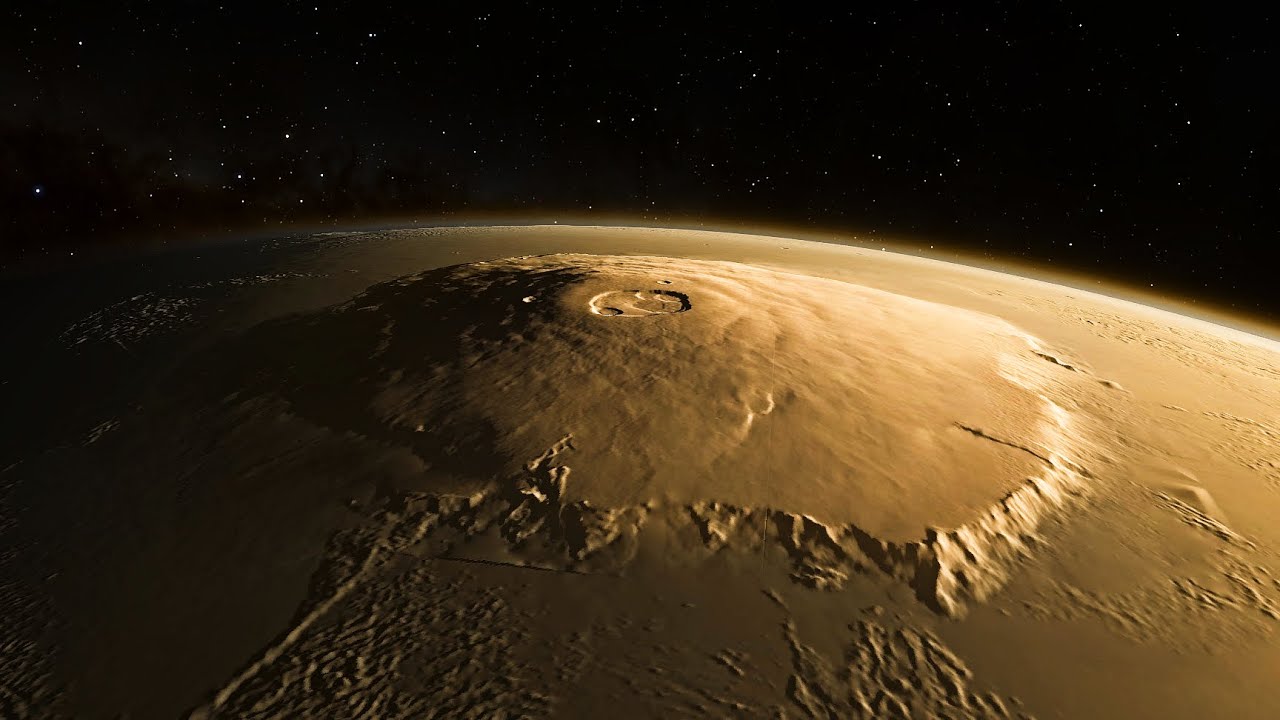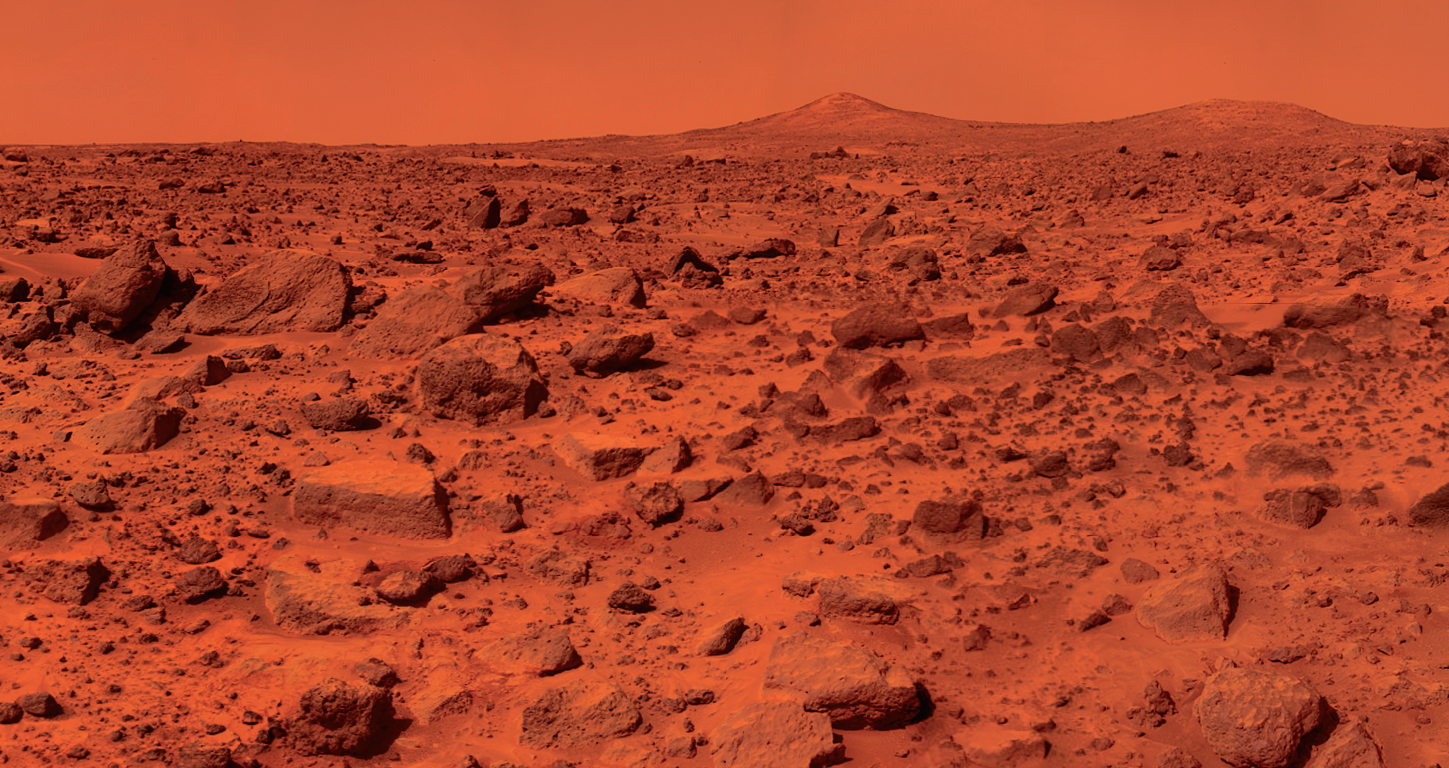Martian
Mars
is the fourth planet of the Solar System, the second smallest planet in the
system after Mercury. It was named after the Roman god of war, Martius. It is a
terrestrial planet, i.e., with a solid rock surface covered with impact
craters, tall volcanoes, deep canyons, and other formations. It has two
irregularly shaped moons called Phobos and Deimos.
Olympus Mons (Mount Olympus) is the highest known mountain in the solar system, located on the surface of Mars in the northwestern part of the Tharsis region. It is a classical shield volcano that has multiple calderas at its summit. It towers 27 km above Mars' zero altitude (roughly 21.5 km above the gravitational surface of Mars.

Valles Marineris (Valley of the Mariner) - named after the Mariner 9 spacecraft that first imaged it in 1971, is the largest known canyon system in the solar system located on the planet Mars.
The Marineru Valley winds across more than
one-sixth of the circumference of the planet's equator, east of the vast
volcanic-tectonic region of Tharsis. The average width is about 200 km, but can
reach up to 500 km in places. The slopes cut down to depths of up to 10 km.

Martian meteorites
Martian meteorites belong to the group of differentiated achondrites and are quite young on a cosmic scale. They formed only a short time ago
1.3 billion to 170 million years ago. Meteorites originating from the planet Mars are referred to as SNC. The abbreviation is derived from the locations where the three main representatives of this group of meteorites were found.
- Shergotty - India, 25 August 1865, 5 kg
- el-Nakhla - Egypt, 28 June 1911, 10 kg
- Chassigny - France, 3 October 1815, 4 kg
Initially, it was only clear that SNC meteorites were of volcanic origin and came from a body that was relatively recently volcanically active.
A breakthrough came when the Elephant Moraine meteorite 79001 was discovered in 1979 in Antarctica. A small amount of gas was discovered in the meteorite, trapped in bubbles formed when the lava solidified. The composition was chemically identical to that discovered by the Viking probes in the atmosphere of Mars. The Martian origin of SNC meteorites was not widely accepted until the 1980s.
In addition to the three main groups, two other subgroups have been found on the surface of the Earth. Orthopyroxenite and basaltic breccias.


Division:
- Shergottite
- Nakhlite
- Chassignite
- Orthopyroxenite
- Basalt breccia
About 82 percent of Martian meteorites are shergottites and related rocks containing mostly pyroxene (augite, subcalcic augite, pigeonite, and/or orthopyroxene), olivine (FazA-en), and maskelynite or plagioclase (Abso-s0), with minor oxides (magnetite, titanomagnetite, wivöspinel, ilmenite, chromite, hercynite, baddeleyite), phosphate (merrillite, chlorapatite) and sulphide (pyrrhotite, pentlandite) and some late phases (silica, pyroxferroite, fayalite, hercynite and ferro-kaersutite).
About 9 percent of Martian meteorites are nakhlites containing mostly augite, subcalcic augite, olivine, and mesostasis and minor to accessory pigeonite, orthopyroxene, plagioclase, K-feldspar, silica, titanomagnetite, ulvöspinel, rutile, magnetite, hercynite. chlorapatite, merrillite, pyrrhotite, pyrite, marcasite, and chalcopyrite.
About 1 percent of the Martian meteorites are chassignites containing ≥90 vol% olivine and minor orthopyroxene (F gWo3), pigeonite, augite, plagioclase, sanidine, chromite, chlorapatite, troilite, pentlandite, ilmenite, rutile, baddeleyite, caersutitic amphibole, biotite, and phlogopite.
About 7 percent of Martian meteorites are classified as polymict breccias. They consist of mixed lithologies and have various differences that can be observed in other Martian meteorites.
Two pyroxenites have also been found among the Martian meteorites: ALH 84001 (contains mostly orthopyroxene, minor chromite, maskelite, augite, apatite, pyrite and carbonate) and NWA 2646 (contains mostly pigeonite, augite, olivine and maskelite, minor oxides, phosphates and sulfides).
Martian meteorites also contain many high-pressure
phases produced during the ejection of Martian rock from the surface.

Achondrite - Shergottite


Achondrite - Nakhlite
Achondrite - Chassignite
Found in Morocco, thought to be a pseudometeorite for about 5 years. It is a heavily shocked cumulate dunite containing about 90% olivine, 5% CPX and 2% plagioclase. Shock metamorphosis has changed the colour of the olivine from green to blue-black.

